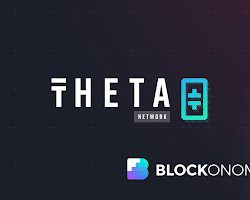Virtual Wealth: Top 10 Metaverse Currencies Making Waves in the Digital Realm

Virtual Currencies in the metaverse are digital or virtual forms of money used within online platforms to facilitate transactions between buyers and sellers. These currencies are specific to the virtual marketplace and are not tied to any physical currency issued by a government or central bank. They are often referred to as virtual currencies, virtual goods, or virtual money.
Virtual marketplaces exist in various forms, such as online gaming platforms, virtual worlds, social media platforms, and e-commerce websites. These marketplaces provide a platform for users to buy and sell goods, services, or virtual items within a digital environment.
Virtual currencies serve as a medium of exchange within these marketplaces, allowing users to trade goods and services with each other. They enable users to conduct transactions, make purchases, and engage in economic activities within the virtual ecosystem.
Virtual currencies can take different forms depending on the specific marketplace. Some marketplaces have their proprietary currency, which is created and controlled by the platform operator. These currencies are often used exclusively within the platform and cannot be exchanged for real-world currency. Examples include Linden Dollars in Second Life and Robux in Roblox.
In other cases, virtual marketplaces may use existing cryptocurrencies as a form of currency. Cryptocurrencies such as Bitcoin, Ethereum, or Litecoin can be used within certain virtual marketplaces as a means of exchange. These cryptocurrencies are decentralized and operate on blockchain technology, providing a secure and transparent way to conduct transactions.
The value of virtual currencies within virtual marketplaces can vary. Some virtual currencies have a fixed exchange rate with real-world currencies, while others may have a floating exchange rate that fluctuates based on supply and demand dynamics within the marketplace.
Users typically acquire virtual currencies through various means. They can purchase them using real-world currency through online payment methods, such as credit cards, PayPal, or cryptocurrency exchanges. Some virtual marketplaces also offer ways to earn virtual currencies through in-platform activities, such as completing quests, participating in events, or selling virtual goods and services.
Virtual currencies often come with certain limitations and restrictions imposed by the marketplace operator. For instance, there may be restrictions on the transferability of virtual currencies outside the platform or limitations on converting them back into real-world currency. These restrictions are in place to maintain the economic balance and integrity of the virtual marketplace.
Virtual currencies have gained significant popularity due to the rise of online gaming and virtual worlds. They provide a way for users to engage in virtual economies, monetize their digital creations, and participate in online transactions. Virtual currencies have also sparked debates regarding their legal and regulatory status, as they can have real-world value and implications for taxation and consumer protection.
In summary, currencies in virtual marketplaces are digital or virtual forms of money used within online platforms to facilitate transactions and economic activities. They are specific to the virtual marketplace and can be proprietary currencies or existing cryptocurrencies. These currencies enable users to buy, sell, and trade goods, services, or virtual items within the virtual ecosystem.
Also read: Different Ways Metaverse Might Influence Cryptocurrencies
Importance of Virtual Currencies for the Economy
Virtual currencies have emerged as an increasingly important aspect of the modern economy. While their impact on the broader economy may still be evolving, there are several key reasons why virtual currencies are considered important:
1. Facilitating Online Transactions: Virtual currencies provide a medium of exchange for digital transactions within virtual marketplaces. They enable users to engage in economic activities, buy and sell goods or services, and participate in virtual economies. By providing a seamless and efficient means of conducting online transactions, virtual currencies contribute to the growth of e-commerce and digital trade.
2. Monetizing Digital Assets: Virtual currencies allow individuals and businesses to monetize their digital creations. In virtual worlds, online games, and social platforms, users can create and sell virtual goods, artwork, experiences, and services. Virtual currencies provide a mechanism for these creators to earn income from their digital assets, which can foster innovation, entrepreneurship, and the development of digital economies.
3. Job Creation and Economic Opportunities: Virtual currencies have given rise to new job opportunities within the virtual economy. People can earn a livelihood by engaging in activities such as virtual item trading, game item farming, digital asset creation, and even currency exchange services. These opportunities can provide income and employment to individuals who may not have traditional job prospects, thus contributing to economic inclusion.
4. International Trade and Remittances: Virtual currencies have the potential to simplify cross-border transactions and facilitate international trade. They can eliminate barriers such as currency conversion costs, transaction fees, and delays associated with traditional banking systems. Virtual currencies can enable direct peer-to-peer transactions, making it easier for individuals and businesses from different countries to engage in commerce and exchange goods and services.
5. Financial Inclusion: Virtual currencies have the potential to promote financial inclusion, especially in regions with limited access to traditional banking services. Virtual wallets and mobile applications can enable individuals to store, send, and receive virtual currencies, providing them with a means to participate in the digital economy. This can empower unbanked populations and offer them financial services that were previously unavailable.
6. Innovation and Technological Advancement: Virtual currencies, particularly those built on blockchain technology, have spurred innovation and technological advancements. The underlying blockchain infrastructure has the potential to revolutionize various sectors, including finance, supply chain management, healthcare, and more. The development of virtual currencies has also prompted research and development efforts in areas such as cryptography, decentralized systems, and cybersecurity.
7. Financial Privacy and Security: Virtual currencies can offer enhanced privacy and security compared to traditional financial systems. Transactions conducted using virtual currencies can be pseudonymous, providing users with a certain level of privacy. Additionally, blockchain technology, with its decentralized and immutable nature, can enhance the security and integrity of transactions, reducing the risks of fraud and unauthorized manipulation.
It is worth noting that the adoption and impact of virtual currencies on the broader economy are still evolving. Challenges such as regulatory frameworks, concerns over money laundering and illicit activities, and the volatility of certain virtual currencies remain areas of ongoing debate and development. However, virtual currencies hold significant potential to shape the economy by enabling digital transactions, driving innovation, and providing economic opportunities for individuals and businesses alike.
Also read: Bitcoin Theory: Where Bitcoin And The Metaverse Meet
Top 10 Metaverse Virtual Currencies Making Waves in the Digital Realm
The metaverse is a hot topic in the tech world right now. It’s a virtual world where people can interact with each other and with digital content. And as the metaverse grows, so too is the demand for metaverse currencies.
These currencies are used to buy and sell goods and services in the metaverse, and they can also be used to gamble, play games, and even earn money. So if you’re interested in the metaverse, it’s important to know which currencies are the most popular.
Here are the top 10 metaverse virtual currencies to watch in 2023:
- ApeCoin (APE)
ApeCoin is a relatively new metaverse currency, but it’s already made a big splash. It’s the official currency of the Bored Ape Yacht Club, one of the most popular NFT collections in the world. And it’s also backed by a strong community of investors. 
- The Sandbox (SAND)
The Sandbox is a popular metaverse platform that allows users to create, build, and monetize their own experiences. SAND is the native currency of The Sandbox, and it’s used to buy and sell virtual land, assets, and experiences.
- Decentraland (MANA)
Decentraland is another popular metaverse platform that’s similar to The Sandbox. MANA is the native currency of Decentraland, and it’s used to buy and sell virtual land, assets, and experiences.

- Enjin Coin (ENJ)
Enjin Coin is a gaming token that’s used to create, manage, and trade NFTs. It’s also used to power the Enjin multiverse, a collection of interconnected virtual worlds.
- Axie Infinity (AXS)
Axie Infinity is a popular play-to-earn game that’s based on the Ethereum blockchain. AXS is the native currency of Axie Infinity, and it’s used to buy and sell Axies, the game’s creatures.

- FLOW
FLOW is a blockchain that’s specifically designed for games and metaverse applications. It’s fast, scalable, and secure, making it a good choice for developers who are building metaverse projects.
- Theta Network (THETA)
Theta Network is a decentralized video streaming platform that uses blockchain technology. THETA is the native currency of Theta Network, and it’s used to reward users for sharing their bandwidth.

- WAX (Worldwide Asset eXchange)
WAX is a blockchain-based platform that’s used to create, trade, and manage virtual goods. It’s a popular choice for gaming and metaverse applications, and it’s supported by a large community of developers.
- GALA
GALA is the native currency of Gala Games, a gaming platform that’s focused on blockchain-based games. GALA can be used to buy and sell NFTs, as well as to participate in the Gala Games ecosystem.

- Crypto.com Coin (CRO)
Crypto.com Coin is the native currency of the Crypto.com platform, a popular cryptocurrency exchange. CRO can be used to pay for fees on the Crypto.com platform, as well as to participate in staking and other earning opportunities.
These are just a few of the most popular metaverse currencies to watch in 2023. As the metaverse continues to grow, it’s likely that we’ll see even more metaverse currencies emerge. So stay tuned, and be sure to do your research before investing in any metaverse currency.
Also read: Top Ten Metaverse Cryptocurrencies Competing With Bitcoin
Risks associated with Virtual Currencies
While virtual currencies have several potential benefits, they also come with inherent risks. Understanding and managing these risks is crucial for users, businesses, and regulatory bodies. Here are some of the key risks associated with virtual currencies:
1. Price Volatility: Virtual currencies, particularly cryptocurrencies like Bitcoin, are known for their price volatility. The value of these currencies can fluctuate dramatically within short periods. Rapid price swings can lead to significant gains for investors but also result in substantial losses. Such volatility poses risks for individuals using virtual currencies as a medium of exchange, as the value of goods and services can vary greatly.
2. Regulatory and Legal Risks: Virtual currencies operate in a complex regulatory landscape. Government authorities worldwide are still developing regulations to govern their use. The lack of clear and consistent regulations can create uncertainty and potential legal risks for users, businesses, and investors. Regulatory actions, such as bans or restrictions on virtual currencies, can impact their value and usability.
3. Security and Fraud: The digital nature of virtual currencies exposes them to various security risks. Cybercriminals can target virtual currency platforms, exchanges, and users to steal funds. Hacking incidents, phishing attacks, and scams are prevalent in the virtual currency space. Users must take precautions such as using secure wallets, two-factor authentication, and adhering to best security practices to mitigate these risks.
4. Lack of Consumer Protection: Unlike traditional financial systems, virtual currencies often lack the same level of consumer protection measures. Transactions made with virtual currencies are usually irreversible, making it challenging to recover funds in case of fraudulent activity or disputes. Furthermore, the absence of regulatory oversight may limit the avenues for seeking legal recourse in case of issues or losses.
5. Market Manipulation: The decentralized and relatively unregulated nature of virtual currency markets can make them susceptible to market manipulation. Market manipulation practices such as pump and dump schemes, insider trading, and price manipulation can artificially inflate or deflate the value of virtual currencies, leading to significant losses for unaware investors.
6. Money Laundering and Illicit Activities: The pseudonymous nature of certain virtual currencies can attract illicit activities, including money laundering, tax evasion, and the financing of illegal activities. Criminals may exploit the anonymity and decentralized nature of virtual currencies to facilitate illicit transactions, which can raise concerns for law enforcement agencies and regulatory bodies.
7. Operational and Technical Risks: Virtual currency platforms and exchanges may face operational and technical risks that can impact users’ funds and transactions. System failures, technical glitches, or cybersecurity breaches can result in financial losses or disruptions to trading activities. Additionally, issues with scalability, network congestion, and transaction processing times can hinder the usability and adoption of virtual currencies.
8. Lack of Interoperability and Standardization: The virtual currency ecosystem is highly fragmented, with numerous currencies and platforms operating independently. The lack of interoperability and standardization can pose challenges for users and businesses, hindering seamless integration and efficient transfer of funds between different virtual currency systems.
It is important for individuals and businesses engaging with virtual currencies to conduct thorough research, exercise caution, and employ appropriate security measures. Regulation and oversight efforts are evolving to address these risks, aiming to strike a balance between fostering innovation and protecting users and the broader financial system.
Future of Virtual Currencies
The future of virtual currencies is a topic of ongoing speculation and debate. While it is challenging to predict with certainty, there are several trends and developments that may shape the future of virtual currencies:
1. Increased Adoption: Virtual currencies have gained significant traction in recent years, with growing adoption by individuals, businesses, and even some governments. As awareness and understanding of virtual currencies improve, more people are likely to embrace them as a medium of exchange, store of value, and investment asset. Increased adoption can drive innovation, liquidity, and stability within the virtual currency ecosystem.
2. Central Bank Digital Currencies (CBDCs): Central banks worldwide are exploring the concept of issuing their digital currencies, known as CBDCs. These digital currencies would be backed by the respective central banks and potentially serve as a digital alternative to physical cash. CBDCs aim to combine the benefits of virtual currencies, such as efficiency and traceability, with the stability and oversight associated with traditional fiat currencies. The introduction of CBDCs could have a profound impact on the virtual currency landscape and reshape the relationship between virtual and traditional currencies.
3. Integration with Traditional Financial Systems: Virtual currencies are gradually being integrated into traditional financial systems. Major financial institutions, such as banks and payment processors, are exploring ways to incorporate virtual currencies into their offerings. This integration can enhance the accessibility, liquidity, and legitimacy of virtual currencies, making them more mainstream and widely accepted.
4. Blockchain Technology Advancements: The underlying technology behind virtual currencies, blockchain, continues to evolve and mature. Advancements in blockchain technology can address scalability issues, improve transaction speeds, enhance privacy features, and enable interoperability between different virtual currency networks. These advancements can unlock new use cases, increase efficiency, and bolster the overall security and trustworthiness of virtual currencies.
5. Enhanced Regulation and Oversight: As virtual currencies gain prominence, governments and regulatory bodies are increasing their efforts to establish regulatory frameworks. Regulation can provide clarity, stability, and consumer protection in the virtual currency space. Striking a balance between regulation and innovation will be crucial to foster the growth of virtual currencies while mitigating risks associated with fraud, money laundering, and market manipulation.
6. Integration with Internet of Things (IoT) and Emerging Technologies: Virtual currencies may intersect with emerging technologies such as the Internet of Things (IoT) and artificial intelligence (AI). For instance, IoT devices could autonomously initiate transactions using virtual currencies to pay for services or access resources. Virtual currencies can also be integrated into AI-based systems for automated trading, smart contract execution, and decentralized decision-making. These intersections can open up new avenues for the utilization and utility of virtual currencies.
7. Global Financial Inclusion: Virtual currencies have the potential to improve financial inclusion by providing access to financial services for unbanked populations worldwide. The ease of use, low transaction costs, and availability of virtual currency platforms can empower individuals in regions with limited access to traditional banking services. Virtual currencies can serve as a bridge to financial inclusion, enabling greater participation in the global economy.
While the future of virtual currencies holds great potential, there are also challenges to address. These include regulatory concerns, security risks, scalability issues, and the need for interoperability. Overcoming these challenges will be crucial for virtual currencies to realize their full potential and contribute positively to the global economy.
Also read: Top 10 Metaverse Projects Changing The Virtual Landscape In 2023


























































